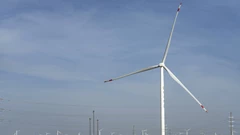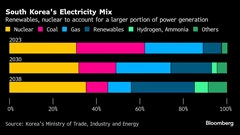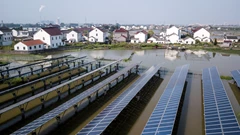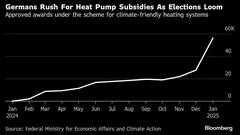The World Lost an Area of Tropical Forest as Big as Switzerland in 2022
(Bloomberg) -- The world lost 11 soccer fields’ worth of tropical forest per minute in 2022 — a total area about the size of Switzerland and 10% more tropical forest than was lost in 2021. The carbon emissions associated with that disappearance were equivalent to all of India’s fossil fuel emissions, according to the University of Maryland’s 2022 data on tree-cover loss, presented by World Resources Institute’s Global Forest Watch.
Forests are vital to sequestering carbon and maintaining Earth’s biodiversity, and millions of people depend on them for their livelihoods. But they are threatened by deforestation, fire and drought, and efforts to protect them have not kept pace.
“Humanity is not on track to meet major forest-related commitments,” write the authors of the Global Forest Watch analysis, released Tuesday.
Brazil, the Democratic Republic of Congo and Bolivia, countries with large tropical rainforests, lost the most acreage in 2022, with Brazil losing the most by far: 1.8 million hectares, or 4.4 million acres.
Brazil’s forests experienced steep losses under former President Jair Bolsonaro, who rolled back environmental protections. Primary (or old-growth) forest loss increased 15% in Brazil from 2021 to 2022. President Luiz Inácio Lula da Silva, who took office in January, promised to end deforestation in the Amazon by 2030, but that will be a difficult task.
Bolivia saw a 32% increase in primary forest loss from 2021 to 2022, mainly due to commodity agriculture. Soybean, sugarcane, corn and sorghum production contributed to the rise. Ghana’s rate of loss also jumped. The majority of its losses were in protected areas associated with cocoa production, fires and gold mining.
Not every country saw forest loss worsen. Indonesia, Costa Rica and Malaysia saw slowdowns. In Indonesia, government action to increase fire protection and restore peatlands and mangroves likely played a role. In Malaysia, policies like stronger certification requirements for sustainable palm oil production appear to have contributed.
In contrast to the higher loss of primary tropical forest, overall global tree-cover loss was actually 10% lower in 2022 than the year before, due in large part to a below-average 2022 fire season in Russia.
In 2021, representatives of 145 countries agreed to work together to stop forest loss and land degradation by 2030 and acknowledged it was key to meeting Paris Agreement climate goals. The 2022 data underscores that urgent action is needed as irreplaceable ecosystems like the Amazon approach “tipping points” that could affect the whole planet’s climate system.
©2023 Bloomberg L.P.
KEEPING THE ENERGY INDUSTRY CONNECTED
Subscribe to our newsletter and get the best of Energy Connects directly to your inbox each week.
By subscribing, you agree to the processing of your personal data by dmg events as described in the Privacy Policy.
More renewables news

Germany’s Merz Takes Aim at Greens in Final Election Stretch

GB Energy Faces Doubts as UK Declines to Affirm Future Funds

Korea Cancels Planned Reactor After Impeaching Pro-Nuke Leader

Brazil’s Net-Zero Transition Will Cost $6 Trillion by 2050, BNEF Says

SolarEdge Climbs 40% as Revenue Beat Prompts Short Covering

EU to Set Aside Funds to Protect Undersea Cables from Sabotage

China Revamps Power Market Rules In Challenge to Renewables Boom

KKR increases stake in Enilive with additional €587.5 million investment

TotalEnergies and Air Liquide partner to develop green hydrogen projects in the Netherlands
















